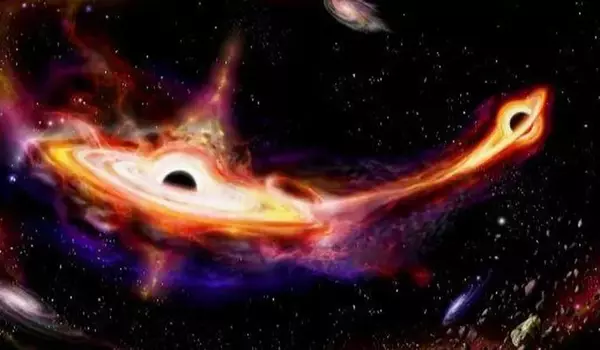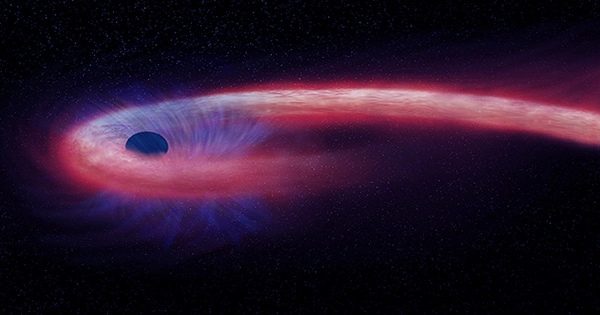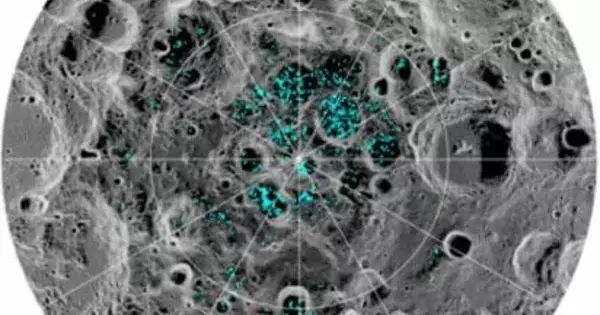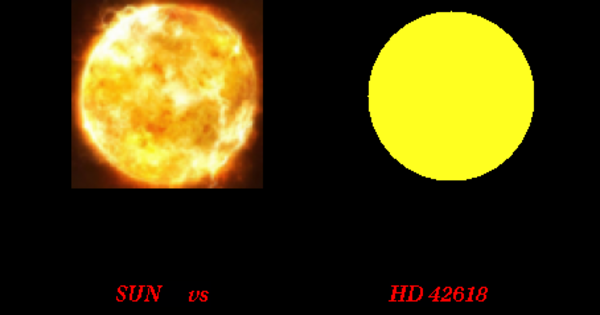This picture combines data from numerous observatories to highlight the galaxy Centaurus A (Cen A). A supermassive black hole in the heart of this galaxy feeds on the gas and dust that surrounds it, and huge jets of high-energy particles and other material burst out. The jet seen in the top left corner of this picture stretches for approximately 13,000 light-years away from the black hole. A dust lane can also be seen winding around the galaxy’s core, which may have originated from a collision with a smaller galaxy millions of years ago.
Colors in this image have been chosen to reflect the sources of data. Blue shows X-ray light captured by NASA’s Chandra X-ray Observatory, orange represents X-rays detected by NASA’s Imaging X-ray Polarimetry Explorer (IXPE) satellite, and optical light seen by the European Southern Observatory in Chile is colored white and gray.
Cen A has been studied extensively since the launch of Chandra in 1999. With IXPE, which launched in 2021, scientists can understand the mysteries of this object in a new way. IXPE is specialized to look at a property of X-ray light called polarization, which relates to the organization of electromagnetic waves.

This unique measurement is assisting scientists in understanding how particles are pushed to great energy and speeds — nearly the speed of light — at extreme cosmic objects such as this one.
Researchers at Cen A are utilizing IXPE to try to figure out what generates the X-ray emission in the jets. So far, no X-ray polarization has been detected at Cen A, indicating that particles much heavier than electrons, such as protons, are not producing the X-rays. Scientists will get further insights when they evaluate the data.
Cen A is the sixth brightest galaxy in the sky, located 12 million light-years from Earth in the constellation Centaurus.
Image credit: X-ray: (IXPE): NASA/MSFC/IXPE/S. Ehlert et al.; (Chandra): NASA/CXC/SAO; Optical: ESO/WFI; Image processing: NASA/CXC/SAO/J.Schmidt
About the Chandra mission: The Chandra program is managed by NASA’s Marshall Space Flight Center. The Smithsonian Astrophysical Observatory’s Chandra X-ray Center is based in Cambridge, Massachusetts, while the flight operations are based in Burlington, Massachusetts.
About the IXPE mission: IXPE is part of NASA’s Small Explorer mission series and will launch in December 2021 on a Falcon 9 rocket from NASA’s Kennedy Space Center in Florida. It presently circles Earth at 370 miles (595 kilometers) above the equator. The project is a collaboration between NASA and the Italian Space Agency, including partners and scientists from 13 nations. Ball Aerospace, based in Broomfield, Colorado, is in charge of spaceship operations.
















